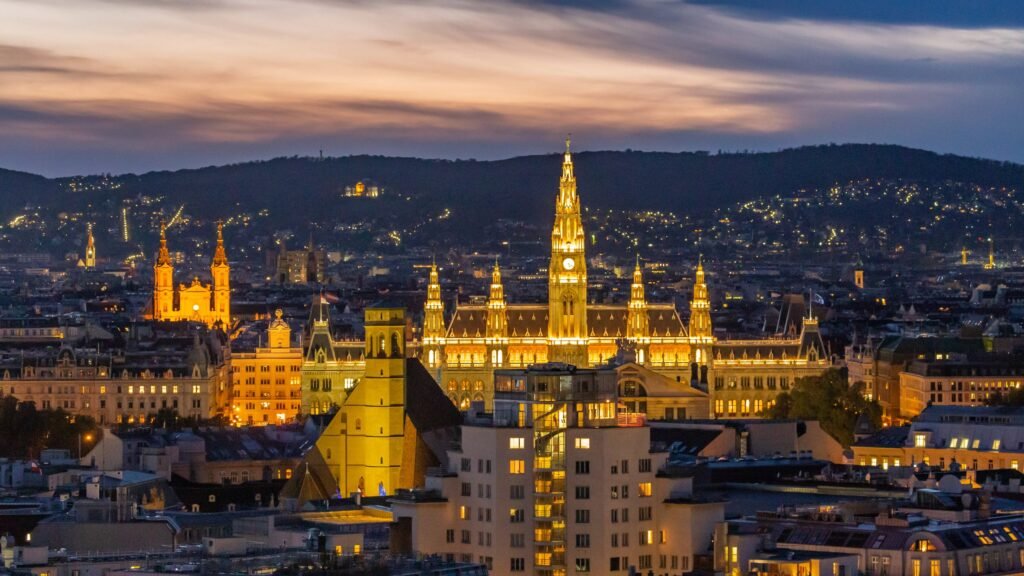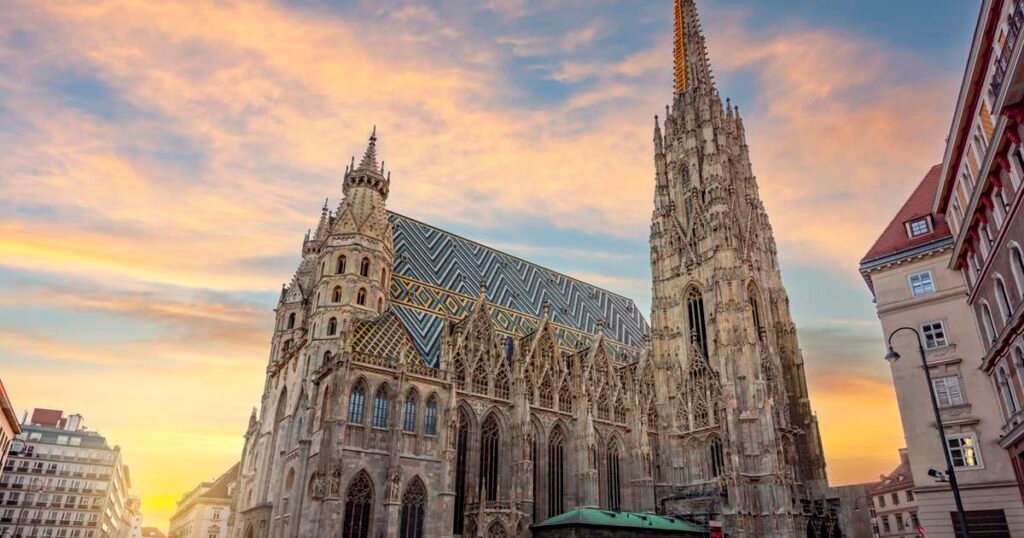In the heart of Vienna’s historic center stands St. Stephen’s Cathedral (Stephansdom), one of the most iconic symbols of Austria and a masterpiece of Gothic architecture. With its towering spire, intricate details, and centuries of history, the cathedral is a must-visit destination for travelers seeking to explore Vienna’s religious, cultural, and architectural heritage.
A Historical Overview
St. Stephen’s Cathedral has been the spiritual center of Vienna for more than 800 years. Construction began in 1137, with major expansions and renovations occurring over the centuries, including the addition of its famous South Tower in the 14th century and the iconic multi-colored tiled roof in the 15th century. The cathedral has witnessed pivotal events in Austrian history, from royal ceremonies to historic gatherings, and has survived fires, wars, and sieges, making it a resilient symbol of the city’s endurance and faith.

Architectural Marvel
The cathedral is a stunning example of Gothic architecture, characterized by pointed arches, ribbed vaults, and flying buttresses. Its South Tower, standing at 136 meters, dominates Vienna’s skyline and remains one of the tallest structures in the city. Visitors can climb its 343 steps to enjoy panoramic views of Vienna and the surrounding Alps—a rewarding experience for photography enthusiasts and those seeking breathtaking cityscapes.
One of St. Stephen’s Cathedral’s most striking features is its colorful tiled roof, adorned with intricate patterns and the Habsburg coat of arms. The detailed façade, ornate doors, and numerous statues of saints and biblical figures reflect the craftsmanship of centuries, showcasing the skill and devotion of the artisans who contributed to its construction.
Spiritual and Cultural Significance
St. Stephen’s Cathedral is not just an architectural marvel; it is a living place of worship. It serves as the seat of the Archbishop of Vienna and hosts daily masses, weddings, and special religious ceremonies. Visitors can witness the spiritual ambiance, attend organ concerts, or simply admire the tranquility within its vast nave.
The cathedral also houses catacombs, where visitors can explore the final resting places of bishops, members of the Habsburg dynasty, and notable citizens, providing a glimpse into Vienna’s history and traditions. The Stephansplatz area surrounding the cathedral is lively, filled with cafés, shops, and street performers, making it a vibrant cultural hub.

Activities and Visitor Experience
A visit to St. Stephen’s Cathedral offers a variety of experiences:
Climb the South Tower: For panoramic views of Vienna and the Alps.
Explore the Catacombs: Discover historical tombs and learn about Vienna’s past.
Attend a Mass or Concert: Experience the cathedral’s spiritual and musical traditions.
Photography: Capture the Gothic architecture, intricate roof patterns, and vibrant square around the cathedral.
Guided Tours: Gain in-depth knowledge of the cathedral’s history, architecture, and art.
Travel Tips
Best Time to Visit: Early morning or late afternoon to avoid crowds; evening visits offer a peaceful atmosphere.
Getting There: Located in Vienna’s city center, accessible by metro, tram, or on foot from major attractions.
Nearby Attractions: Hofburg Palace, Vienna State Opera, Graben Street, and the Museum Quarter are all within walking distance.
What to Bring: Comfortable walking shoes, a camera, and modest attire if attending religious services.
Conclusion
St. Stephen’s Cathedral is more than a religious site—it is a symbol of Vienna’s resilience, culture, and architectural brilliance. From its towering spires and colorful roof to its rich history and spiritual significance, the cathedral captivates every visitor who walks through its doors. Whether you are an architecture enthusiast, history lover, or a casual traveler, St. Stephen’s Cathedral promises an awe-inspiring experience and a deeper connection to Vienna’s vibrant past and present.





















